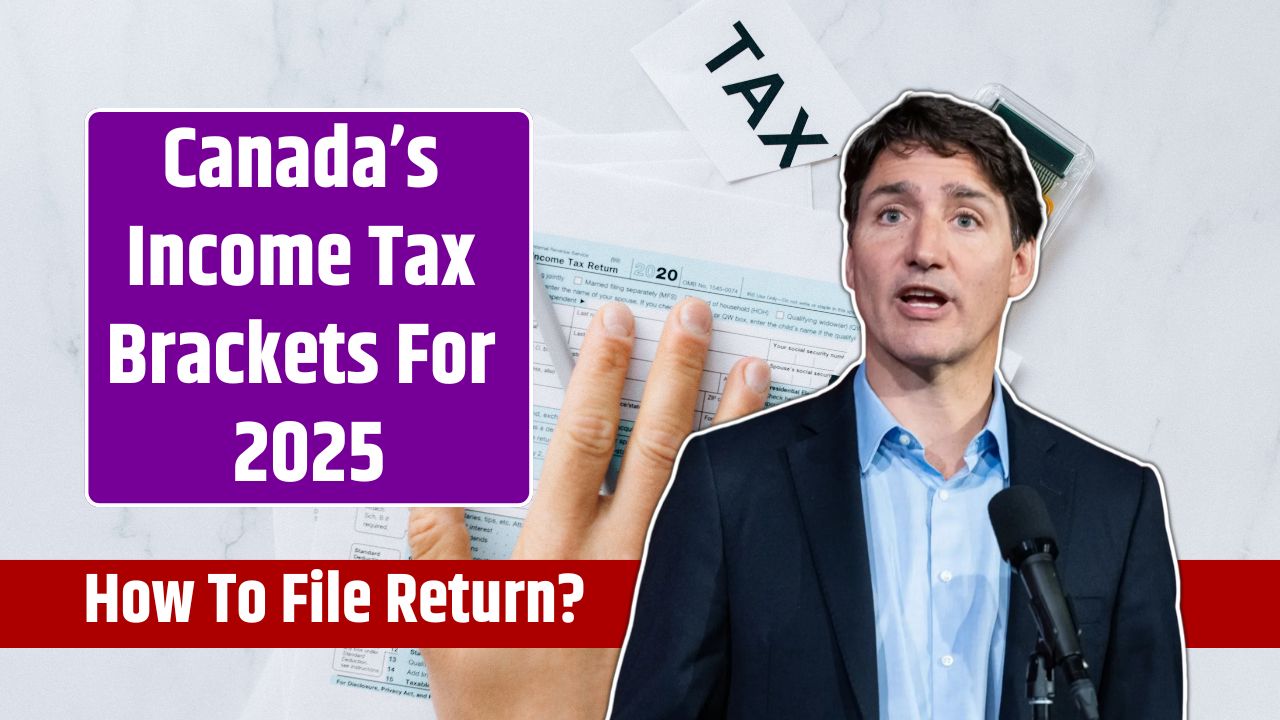Understanding Canada’s 2025 income tax brackets is essential for accurate tax filing and ensuring you maximize deductions and credits.
Whether you’re a seasoned taxpayer or filing for the first time, this guide will walk you through the tax system, filing steps, and key deadlines.
Canada’s Progressive Tax System
Canada’s income tax system is progressive, meaning higher earnings are taxed at higher rates, but only on the portion that exceeds each bracket. For example, if you earn $120,000:
- The first $57,375 is taxed at 15%.
- The next $57,375 is taxed at 20.5%.
- The remaining $5,250 is taxed at 26%.
This system ensures fairness by preventing lower-income earners from facing excessive tax burdens.
Federal Tax Brackets for 2025
Here are the federal income tax brackets for 2025:
- 15% on the first $57,375 of taxable income.
- 20.5% on the portion over $57,375 up to $114,750.
- 26% on the portion over $114,750 up to $177,882.
- 29% on the portion over $177,882 up to $253,414.
- 33% on the portion over $253,414.
Example Calculation
For a person earning $85,000:
- First $57,375: 15% of $57,375 = $8,606.25.
- Next $27,625: 20.5% of $27,625 = $5,662.13.
- Total Federal Tax: $8,606.25 + $5,662.13 = $14,268.38.
Provincial Taxes
In addition to federal taxes, you’ll pay provincial or territorial taxes, which vary by region. For example:
- Ontario: Progressive rates starting at 5.05%.
- Alberta: Flat tax of 10% for most incomes.
- Quebec: Rates begin at 15%, higher than most provinces.
Visit TaxTips.ca for a detailed breakdown of your province’s rates.
Filing Your Tax Return in Canada
Step 1: Gather Your Documents
Ensure you have all required paperwork:
- T4 Slips: Employment income summaries.
- T5 Slips: Investment income statements.
- Receipts: For childcare, medical expenses, and charitable donations.
- RRSP Contribution Slips: To claim deductions.
- Notice of Assessment (NOA): Reference for previous tax details.
Step 2: Choose Your Filing Method
- NETFILE: File directly through CRA-approved software.
- EFILE: Have a professional file on your behalf.
- Paper Filing: Complete and mail physical forms.
Electronic filing is faster, more accurate, and provides immediate confirmation.
Step 3: Complete the Required Forms
- T1 General: Main individual tax form.
- Schedule 1: For calculating federal tax.
- Provincial/Territorial Forms: Required for regional taxes.
Double-check all entries to avoid errors that could delay processing or refunds.
Step 4: Calculate Taxable Income
- Add All Income: Include employment, investments, and pensions.
- Subtract Deductions: Claim RRSP contributions, childcare costs, and medical expenses.
Step 5: Apply Tax Credits
Claim available credits to reduce your tax liability, including:
- Basic Personal Amount: A non-refundable credit for all taxpayers.
- Canada Employment Credit: For work-related expenses.
- Medical Expense Credit: For eligible costs.
- Tuition Credits: For students enrolled in post-secondary education.
Step 6: Submit Your Return
- File electronically via NETFILE or EFILE.
- If filing by mail, send your forms to the appropriate CRA address.
- Keep copies of all documents for your records.
Step 7: Pay Any Balance Owing
Pay your balance by April 30, 2025, to avoid penalties. Payment options include:
- Online banking.
- CRA My Payment.
- Cheque or money order.
Contact the CRA if you anticipate difficulties paying your taxes on time—they may offer payment plans.
Deadlines to Remember
- Filing Deadline: April 30, 2025.
- Self-Employed Deadline: June 16, 2025 (extended since June 15 is a Sunday).
- Payment Deadline: April 30, 2025.
Tips for Stress-Free Filing
- Use CRA Resources: Access tools like My Account for easy tax tracking.
- Stay Organized: Keep receipts and documents in one place year-round.
- Consult a Professional: For complex situations, professional advice can ensure accuracy and maximize savings.
With a clear understanding of Canada’s income tax brackets and filing process, you can confidently file your taxes while maximizing your deductions and credits.
















